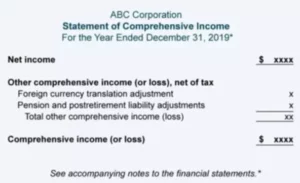Types of Errors in Accounting
An error in accounting is a non-fraudulent error in double-entry bookkeeping transactions. In most cases, errors occur because the bookkeeper either lacks accounting expertise or is careless.
The moment an error is spotted, investigative measures should be taken and corrections made. Errors that are allowed to persist in the ledgers can compound over time and create massive headaches to find and correct later.
Unlike an accounting error, accounting fraud is a deliberate falsification or misrepresentation of the financial affairs of the entity. Don’t get the two mixed up. Errors simply need to be corrected. Fraud should be prosecuted.
Some errors can be identified quickly while others take time. You can spot the easy errors when the debits do not equal the credits in the trial balance. The harder errors to identify do not affect the trial balance. Detecting these errors requires investigative expertise. Until you can find and correct the source of the error, you should show the trial balance discrepancy in a temporary suspense account.
The errors described below are typical in bookkeeping.
Accounting errors affecting the trial balance
As mentioned above, errors that throw the trial balance out of balance are relatively easy to find. The following two types of errors are common when the ledger accounts do not balance.
- Error of omission: Leaving out part of a double-entry transaction creates an imbalance in the trial balance. For example, the bookkeeper enters a debit in one account without entering an offsetting credit in another account.
- Error of commission: Recording unmatched values in offsetting credits and debits or entering two credits or debits instead of one credit and an offsetting debit are two types of errors of commission. For instance, the bookkeeper may have entered $421 as a credit but mistyped $412 as the offsetting debit. Or the bookkeeper entered $500 as a credit to one account and then mistakenly entered $500 in the credit column rather than the debit column of another account.
Errors not affecting the trial balance
Errors can occur in the account ledgers that do not throw the trial balance out of balance. These errors can be hard to find and require knowledgeable investigation.
- Omission error: A transaction was simply not recorded in the ledger. The company made a sale, but the sale was not recorded.
- Commission error: Data was recorded in the wrong accounts. The purchase of office supplies was recorded in the account for utilities expenses.
- Principle error: The transaction was recorded improperly. The purchase of an asset was treated as an expense.
- Compensating error: Two separate errors compensate each other. For example, Customer A purchased a product for $1,500 but the bookkeeper recorded only $500 for the sale. Later, the company bought supplies for $2,500 but the bookkeeper recorded only $1,500 for the expense. In both cases, the differences of $1,000 in incoming and outgoing accounts cancel each other out in the trial balance.
- An error of original entry: An incorrect amount was posted to the correct accounts. The bookkeeper incorrectly entered $524 instead of $542 in both the debit and credit accounts.
- Reversal of entries: The right amount was entered in the correct accounts but the debit and credit categories were switched. For example, the cost of goods sold, which includes the cost of buying raw materials, is credited instead of debited, and finished inventory, i.e., the result of turning the raw materials into sellable products, is debited instead of credited.
Correcting Errors of Principle in Accounting
Also called an input error, this error occurs when the real value of the entry is not posted to the correct account. For instance, a $700 purchase of office chairs is debited to the office expense account in place of the purchase account.
To correct this type of error, simply enter offsetting debits and credits to the affected accounts as shown in the illustration below:
| Account | DR | CR |
Office Expenses A/C wrong | 700 | |
| Purchase A/C correct | 700 |
Correcting Errors of Omission in Accounting
A financial transaction missed in the company’s accounting records is an error of omission. Two subtypes of this kind of error are common:
- A complete error of omission – the bookkeeper failed to enter the transaction altogether.
- A partial error of omission – the transaction has been recorded only on one side of the ledger. The illustration below shows the partial omission of an accounts receivable account not debited where goods were sold on credit.
| Account | DR | CR |
| Sales A/C | 1800 | |
| Accounts Receivable A/C wrong | Not Entered |
To correct a partial error of omission, simply enter the missing half of the transaction:
| Account | DR | CR |
| Sales A/C | 1800 | |
| Accounts Receivable A/C correct | 1800 |
Correcting Errors of Commission
An error of commission is often called a clerical error. It occurs when an incorrect value is entered in the ledger. For example, the bookkeeper entered a sale of products for $300 instead of the actual value of $3,000.
To correct an error of commission, you must first reverse the incorrect amount and then enter the correct amount. In the illustration below, the first two rows are the error of commission. They are followed in the next two rows by the reversing entries and then the correct entries.
| Account | DR | CR |
| Sales A/C wrong | 300 | |
| Accounts Receivable A/C wrong | 300 | |
| Sales A/C reverse | 300 | |
| Accounts Receivable A/C reverse | 300 | |
| Sales A/C correct | 1300 | |
| Accounts Receivable A/C correct | 1300 |
Correcting Compensating Errors
Compensating errors pop up when two errors in unrelated accounts balance each other out. For instance, your company sold George a product for $500 and bought raw materials from Tom for $800. Your bookkeeper, however, recorded the sale to Tom’s account and the purchase to George’s account. At the end of the day, the ledgers balance, but the values were credited and debited to the wrong accounts.
How do you detect this type of error? You will probably get an email from George asking why you sent him a receipt for $800 when he hadn’t sold you anything. And you’ll most definitely get a phone call from Tom asking why you sent him a bill for $500 when he hadn’t bought anything from you.
To correct a compensating error, reverse the incorrect transactions and then enter the correct transactions, as in the following example:
| Account | DR | CR |
| Purchases from George wrong | 500 | |
| Accounts Payable wrong | 500 | |
| Sales to Tom wrong | 800 | |
| Accounts Receivable wrong | 800 | |
| Purchases from George reverse | 500 | |
| Accounts Payable reverse | 500 | |
| Sales to Tom reverse | 800 | |
| Accounts Receivable reverse | 800 | |
| Sales to George correct | 500 | |
| Accounts Receivable correct | 500 | |
| Purchase from Tom correct | 800 | |
| Accounts Payable correct | 800 |
Correcting Errors of Original Entry
In an error of original entry, the bookkeeper mistyped the value of an entry, such as reversing two digits in a number.
To correct an error of original entry, reverse the incorrect transaction and then record the transaction with the correct value.
Correcting Complete Reversal of Entries
An error of reversal takes place when a credit is entered as a debit and a debit is entered as a credit. For instance, a $400 invoice sent to a client is input in accounts payable instead of accounts receivable.
Correct this error by reversing the incorrect debit and entering the correct credit, as in this example:
| Account | DR | CR |
| Sales A/C | 400 | |
| Accounts Payable A/C wrong | 400 | |
| Accounts Payable A/C reverse | 400 | |
| Accounts Receivable A/C correct | 400 |
Conclusion
Bookkeeping errors happen. It is simply a fact of life and doing business. Regular, frequent reconciliations are part of the solution. A trial balance can tell you a lot about mistakes in recording that affect the account balances. Errors that creep in without upsetting ledger balances are trickier to find. They may not be discovered for weeks or months and sometimes only after an audit.
The best strategy for preventing accounting errors is to use a qualified, professional bookkeeper. An experienced bookkeeper is familiar with all the sources of errors and uses proven techniques to ensure that mistakes do not make their way into the bookkeeper’s work.
BooksTime provides highly qualified bookkeepers dedicated to your company with many years of experience. The Bookstime professionals use modern accounting applications (like Quickbooks) to control the accuracy of accounting records. The BooksTime bookkeeping service comes with a 100% accuracy guarantee!
If you have any questions regarding the Accounting Errors and Error Corrections – we are here to help. BooksTime provides a wide range of accounting services and respective consultations and has got significant experience in working with different industries. We are focused on working with small companies and ready to step in at any stage to help your business development to get more visibility and clarity in accounting.
When doing accounting by high-level professionals, it can turn from being big trouble to an efficient instrument for planning and analysis. Contact us at learn.more@bookstime.com for a free consultation.

















